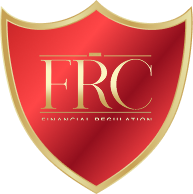In the global push toward sustainability, the green bond market has emerged as a critical tool for financing environmentally responsible projects. These bonds, specifically issued to fund initiatives like renewable energy, energy efficiency, and conservation efforts, are rapidly gaining popularity among investors.
Investment advisors play a pivotal role in facilitating this growth by connecting clients with green investment opportunities, aligning portfolios with Environmental, Social, and Governance (ESG) principles, and educating stakeholders about the benefits and risks of green bonds. This article explores how investment advisors contribute to the development of the green bond market and why their involvement is essential for its continued expansion.
Green bonds are debt instruments used exclusively to fund projects with environmental benefits. Issued by governments, corporations, and financial institutions, green bonds help tackle climate change, improve resource efficiency, and promote sustainable development.
Examples of funded projects include:
Solar and wind power installations.
Sustainable agriculture and forestry initiatives.
Water conservation and waste management systems.
The global green bond market has seen exponential growth over the past decade. According to the Climate Bonds Initiative (CBI), green bond issuances surpassed $500 billion in 2023, reflecting increasing investor demand for sustainable financial products.
Investment advisors are instrumental in bridging the gap between green bond issuers and investors. Their responsibilities include:
Advisors inform clients about the purpose and benefits of green bonds, addressing questions like:
What makes a bond “green”?
How are green bonds certified?
What are the risks and returns associated with these investments?
Advisors also explain how green bonds align with broader ESG strategies, enhancing client understanding and confidence.
Advisors design portfolios that incorporate green bonds to:
Diversify investments.
Achieve environmental impact goals without compromising financial performance.
Align with regulations and mandates requiring ESG integration, such as the EU’s Sustainable Finance Disclosure Regulation (SFDR).
Green bonds come with unique risks, including:
Greenwashing: The risk of issuers falsely claiming environmental benefits.
Market Liquidity: Limited secondary market trading compared to traditional bonds.
Certification Standards: Variations in what constitutes a “green” project.
Advisors assess these risks and select credible, certified green bonds for their clients.
By recommending green bonds, advisors contribute to market demand, encouraging more issuers to adopt sustainable practices. This advocacy supports the transition to a low-carbon economy and helps standardise green financing frameworks.
Advisors must first understand their clients’ sustainability objectives. This involves:
Conducting ESG preference assessments.
Identifying clients interested in supporting renewable energy, conservation, or climate resilience projects.
Balancing environmental impact with financial returns.
Advisors ensure the credibility of green bonds by:
Verifying certifications such as those provided by the Climate Bonds Standard or external reviewers like Sustainalytics.
Reviewing issuer reports detailing the allocation of funds and project outcomes.
Advisors must remain informed about:
New issuances and frameworks.
Regulatory developments, such as the UK Green Taxonomy.
Innovations in green bond structures, including transition bonds and sustainability-linked bonds.
Tools such as ESG data platforms and green bond indices help advisors identify and evaluate suitable investments. Examples include:
Bloomberg Barclays MSCI Green Bond Index: Tracks the performance of global green bonds.
Morningstar Direct: Offers detailed ESG ratings and impact metrics.
Green bonds provide an opportunity to contribute to meaningful environmental change while earning returns. Projects funded by green bonds help mitigate climate change and support global sustainability goals, such as the United Nations’ Sustainable Development Goals (SDGs).
Green bonds often appeal to risk-averse investors due to their:
Backing by reliable issuers, including governments and multinational organisations.
Competitive yields compared to conventional bonds.
Investing in green bonds demonstrates a commitment to sustainability, enhancing the reputation of institutional and individual investors.
While the green bond market is growing, it faces several challenges:
The absence of universally accepted green bond standards can confuse investors. Advisors must navigate varying frameworks to ensure investments align with true environmental goals.
Not all bonds marketed as “green” deliver genuine environmental benefits. Advisors play a crucial role in scrutinising claims and avoiding investments that lack transparency.
Green bonds represent a small fraction of the global bond market, limiting options for large-scale investments.
An investment advisor worked with a corporate pension fund aiming to reduce its carbon footprint. By allocating a portion of the fund to green bonds, the advisor:
Achieved alignment with the company’s sustainability objectives.
Maintained steady returns for retirees.
Enhanced the fund’s public image.
A financial advisor introduced green bonds to a retail client interested in ethical investing. Through educational sessions and ESG-focused resources, the client gained confidence in integrating green bonds into their portfolio.
Governments worldwide are introducing policies to promote green finance, such as the EU Green Bond Standard. These regulations will likely increase green bond issuance and investor participation.
Blockchain technology is being explored to enhance transparency and traceability in green bond reporting, addressing concerns about greenwashing.
The evolution of green finance is leading to the creation of new instruments, including:
Blue Bonds: Focused on marine conservation.
Social Bonds: Targeting social impact alongside environmental goals.
Advisors seeking to deepen their expertise in green finance can explore:
“Green Bonds: A Guide to the World’s Fastest Growing Financial Market” by Dirk Schoenmaker
Reports from the Climate Bonds Initiative (CBI)
ESG Advisor Certificate by Financial Regulation Courses (FRC)
A comprehensive programme covering ESG principles and green bond strategies.
Certificate in Green and Sustainable Finance by the Chartered Banker Institute
Focuses on sustainable finance practices, including green bond markets.
edX Sustainable Finance Programmes
Coursera’s Climate Finance Series
Investment advisors play a vital role in shaping the future of the green bond market. By educating clients, aligning investments with sustainability goals, and advocating for credible issuances, they help foster a financial system that supports environmental responsibility.
As green bonds continue to gain traction, advisors equipped with the right knowledge and tools will be at the forefront of this transformative shift, driving positive impact while delivering robust financial outcomes for their clients.
Be the first to know about new class launches and announcements.


Financial writer and analyst Ron Finely shows you how to navigate financial markets, manage investments, and build wealth through strategic decision-making.
